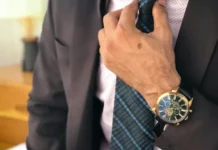 I first noticed the trend of coffee shop interviews while waiting for a flight at an airport. Two young developers were frantically googling interview attire tips, one of them stressing about meeting a startup CEO at some local coffee spot. It brought back memories of my own early career interview disasters – particularly that oversized suit I thought would “leave room to grow into.”
I first noticed the trend of coffee shop interviews while waiting for a flight at an airport. Two young developers were frantically googling interview attire tips, one of them stressing about meeting a startup CEO at some local coffee spot. It brought back memories of my own early career interview disasters – particularly that oversized suit I thought would “leave room to grow into.”
Understanding the Coffee Shop Interview
Think of a coffee shop interview as a traditional interview with the formal barriers stripped away. It’s not just a change of location – it’s about creating space for a more authentic conversation. Having been on both sides of these interviews now, I can tell you they’re less about interrogation and more about assessing mutual fit.
The Style Question: What to Wear
 This is where things get tricky, and it’s actually one of the most common questions I get from FashionFests readers. You need to thread the needle between looking polished and not seeming overdressed for the venue. I learned this balance through trial and error (mostly error, if I’m being honest).
This is where things get tricky, and it’s actually one of the most common questions I get from FashionFests readers. You need to thread the needle between looking polished and not seeming overdressed for the venue. I learned this balance through trial and error (mostly error, if I’m being honest).
Here’s what I’ve found works:
- A well-fitted button-down or quality polo (save the conference t-shirts for another day)
- A blazer or quality sweater that you can remove if needed
- Dark, well-fitted chinos or premium dark jeans
- Clean, minimal sneakers or dress boots
I once showed up to a client meeting wearing what I thought were matching khakis – turns out different shades of beige look a lot more different in coffee shop lighting than they do in your closet at 6am. These days, I stick to darker colors that are more forgiving.
Building Natural Rapport
The beauty of coffee shop interviews lies in their potential for natural conversation. Early in my career, I approached these meetings like technical specifications – rigid and overly structured. Now I understand they’re more like good documentation: clear and professional, but accessible.
A senior tech executive once taught me that presence matters more than perfection. It was a simple lesson about pocket squares that turned into broader advice about confidence in professional settings. The same principle applies here – it’s not about being perfectly polished, it’s about being authentically professional.
Some practical tips I’ve learned:
- Choose your seat thoughtfully (avoid facing directly into sunlight – nothing kills confidence like constant squinting)
- Keep your items organized (you don’t want to be that person digging through a messy bag)
- Order something simple (this isn’t the time to experiment with that complex cold brew creation)
Common Pitfalls to Avoid
 Recently, while working remotely from a coffee shop, I watched a clearly nervous candidate show up for an interview in full formal wear – suit, tie, the works. In a cafe full of tech workers in hoodies, he looked uncomfortable and spent most of his time fidgeting with his tie. Your discomfort shows, and it distracts from your message.
Recently, while working remotely from a coffee shop, I watched a clearly nervous candidate show up for an interview in full formal wear – suit, tie, the works. In a cafe full of tech workers in hoodies, he looked uncomfortable and spent most of his time fidgeting with his tie. Your discomfort shows, and it distracts from your message.
Other things to watch for:
- Don’t arrive too early (camping out for 30 minutes makes everyone uncomfortable)
- Skip the large meals or complicated drinks
- Keep your tech in check (yes, you can bring your laptop, but don’t treat it like a regular work session)
The Technical Leader’s Advantage
Here’s something I’ve discovered from both sides of the table: technical leaders often have an unexpected advantage in these settings. We’re used to explaining complex concepts in simple terms, and we know how to read our audience. If you can explain a complex architecture decision to stakeholders, you can navigate a coffee shop interview.
The same skills that make you good at your job – clear communication, problem-solving, and adaptability – are exactly what these informal interviews are meant to showcase. I’ve found that treating these meetings as collaborative discussions rather than interrogations leads to much better outcomes.
Final Thoughts
Like any good system design, the key to success is finding the right balance between structure and flexibility. Dress appropriately, stay authentic, and treat it like what it is: a conversation between professionals who happen to be meeting over coffee.
Remember, everyone you see in a leadership role has their own story of that first oversized suit or mismatched outfit. What matters isn’t that you never make mistakes – it’s how you learn from them and help others avoid the same pitfalls.
















